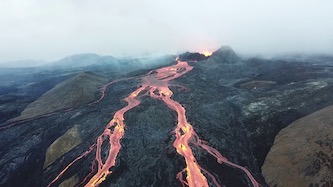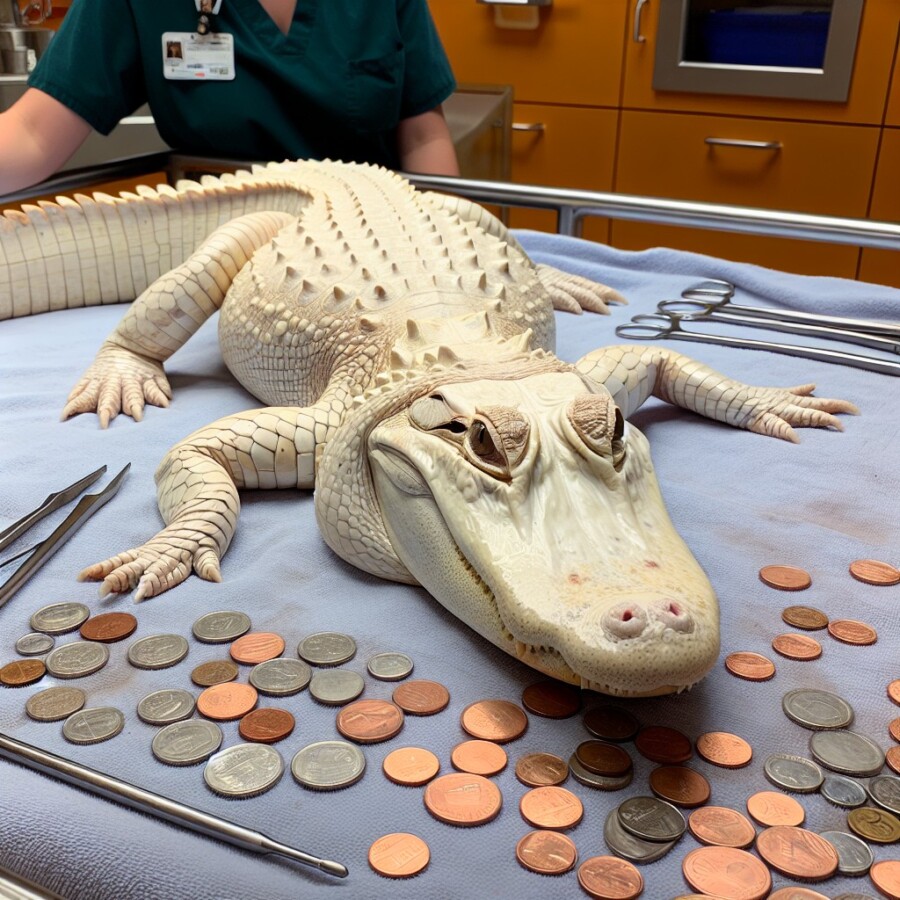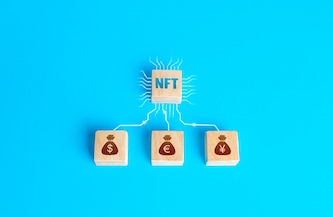The Icelandic Met Office (IMO) has warned that the south-western peninsula of Iceland could experience volcanic instability for decades. The recent earthquakes and concerns of an imminent eruption have led to the evacuation of the small fishing town of Grindavik. After a gap of 800 years, volcanic eruptions on the Reykjanes Peninsula resumed in 2021, indicating a potential new eruptive cycle. The IMO expects volcanic eruptions to occur along the peninsula, not just in the same location repeatedly. This instability could persist for a long time.
Dr. Matthew Roberts, a managing director at the IMO’s Reykjavik headquarters, showed us a room where staff continuously monitor seismic activity. Last Friday, they were surprised to discover that magma was flowing into the ground, causing rocks to fracture over a distance of 15km. This underground movement was unprecedented in modern times. The evacuation order was swiftly issued, and images soon emerged of severely cracked roads and damaged houses due to repeated earthquakes. The sinking of the town of Grindavik will continue, exacerbating the destruction of buildings and roads. The western part of the town has already sunk more than a meter since last Friday and continues to sink at a rate of about 4cm per day.
A color map shows the recent collapse of land, with one area remaining highly volatile and likely to experience an eruption within days or weeks. If an eruption occurs, it could cause significant damage to local infrastructure and release toxic fumes. Aerial photographs indicate that the magma is flowing beneath a previous visible fissure that dates back centuries. Iceland is accustomed to volcanic activity due to its location over the Mid-Atlantic Ridge, where the Eurasian and North American plates are gradually moving apart. However, the evacuation of an entire community has not happened in 50 years.
In 1973, a fissure on Heimaey, the largest of Iceland’s Westman Islands, started spewing molten lava. Currently, the magma beneath the Reykjanes Peninsula is estimated to be about 800m below the surface. It may take weeks, or even longer, before residents can return to the area. Dr. Roberts believes that an explosive eruption is not expected, although this may not necessarily be a positive outcome. A low-intensity eruption could result in lava flowing from multiple fissures over an extended period. Contingency plans include the construction of protective barriers near the geothermal plant and the closure of the famous Blue Lagoon spa. While Iceland has various innovative methods to combat lava, Dr. Roberts acknowledges that nature always prevails in the long run.
Original news source: Iceland volcano: Peninsula faces ‘decades’ of instability (BBC)
Listen
Slow
Normal
Fast
Group or Classroom Activities
Warm-up Activities:
– News Summary
Instructions: Students will be divided into small groups. Each group will quickly read the article and then work together to summarize the key points in just five sentences. They will then present their summaries to the class, and the class will discuss any differing points or additional details that groups have included.
– Opinion Poll
Instructions: The teacher will write a series of statements about the situation described in the article, such as “Volcanic eruptions can be predicted accurately enough to prevent most damage” or “The needs of the local community should be prioritized over tourist attractions like the Blue Lagoon spa.” Students will move to different areas of the room to indicate ‘Agree,’ ‘Disagree,’ or ‘Unsure,’ and then discuss their reasons with the class or in small groups.
– Future Predictions
Instructions: Working in pairs, students will use information from the article to make predictions about the future of the Reykjanes Peninsula and the town of Grindavik. They will speculate on the long-term consequences of the volcanic activity, the potential impact on Iceland’s infrastructure and tourism, and how the local community might adapt. Each pair will then share their predictions with the class.
– Keyword Taboo
Instructions: Write down a set of key terms from the article (e.g., volcanic eruptions, magma, seismic activity, evacuation, fissure, Mid-Atlantic Ridge). Students will play in pairs or small groups. One student must describe the keyword to their partner(s) without using the word itself or any other words on a predefined ‘taboo’ list. This activity will help reinforce vocabulary and concepts from the article.
– Sketch It
Instructions: Students will be given a few minutes to individually sketch a scene or concept from the article, such as the seismic monitoring room at the IMO, the cracked roads and sinking buildings in Grindavik, or the construction of protective barriers. They must use these sketches as a visual aid to explain the situation to a partner or small group, who will then provide feedback or ask questions for clarification. This activity promotes comprehension through visual representation and discussion.
Comprehension Questions:
1. What has led to the evacuation of the small fishing town of Grindavik in Iceland?
2. How long had it been since the last volcanic eruptions on the Reykjanes Peninsula before they resumed in 2021?
3. What unique event was detected by the Icelandic Met Office last Friday concerning seismic activity?
4. By how much has the western part of the town of Grindavik sunk since the recent seismic events began?
5. What are the potential consequences of an eruption on the south-western peninsula of Iceland according to the article?
6. When was the last time an entire community was evacuated in Iceland due to volcanic activity prior to this event?
7. What is the estimated depth of the magma beneath the Reykjanes Peninsula, and what does Dr. Roberts expect in terms of the eruption’s intensity?
8. What contingency plans are mentioned in the article to deal with the possible volcanic eruption near Grindavik?
Go to answers ⇩
Listen and Fill in the Gaps:
The Icelandic Met Office (IMO) has warned that the south-western (1)______ of Iceland could experience volcanic instability for decades. The recent (2)______ and concerns of an imminent eruption have led to the evacuation of the small fishing town of (3)______. After a gap of 800 years, volcanic eruptions on the Reykjanes Peninsula resumed in 2021, indicating a potential new eruptive cycle. The IMO expects volcanic eruptions to occur along the peninsula, not just in the same location repeatedly. This instability could persist for a long time.
Dr. Matthew Roberts, a managing director at the IMO’s Reykjavik headquarters, showed us a room where (4)______ continuously monitor seismic activity. Last Friday, they were surprised to (5)______ that magma was flowing into the ground, causing (6)______ to fracture over a distance of 15km. This underground movement was (7)______ in modern times. The evacuation order was swiftly (8)______, and images soon emerged of severely cracked roads and damaged houses due to repeated earthquakes. The sinking of the town of Grindavik will continue, exacerbating the destruction of buildings and roads. The western part of the town has already sunk more than a meter since last Friday and continues to sink at a rate of about 4cm per day.
A color map shows the recent collapse of land, with one area remaining highly volatile and likely to experience an eruption within days or weeks. If an eruption occurs, it could cause significant damage to local infrastructure and release toxic (9)______. (10)______ photographs indicate that the magma is flowing beneath a previous visible fissure that dates back centuries. Iceland is accustomed to (11)______ activity due to its location over the Mid-Atlantic Ridge, where the Eurasian and North American plates are gradually moving apart. However, the evacuation of an entire community has not happened in 50 years.
In 1973, a fissure on Heimaey, the largest of Iceland’s (12)______ Islands, started spewing molten lava. Currently, the magma beneath the Reykjanes Peninsula is estimated to be about 800m below the surface. It may take weeks, or even longer, before residents can return to the area. Dr. Roberts believes that an explosive eruption is not expected, although this may not necessarily be a positive outcome. A low-intensity eruption could result in lava flowing from multiple fissures over an extended period. Contingency (13)______ include the construction of protective barriers near the geothermal plant and the closure of the (14)______ Blue Lagoon spa. While Iceland has (15)______ innovative (16)______ to combat lava, Dr. Roberts acknowledges that nature always prevails in the long run.
Go to answers ⇩
Discussion Questions:
Students can ask a partner these questions, or discuss them as a group.
1. What is your understanding of volcanic instability, and how do you think living in an area prone to such events would affect daily life?
2. How would you feel if you had to evacuate your town due to a natural disaster, like the residents of Grindavik?
3. Do you think communities should be rebuilt in areas that are known to be at high risk for natural disasters? Why or why not?
4. Have you or someone you know ever experienced an earthquake or a volcanic eruption? What was that like?
5. What innovative methods do you think could be used to protect towns from volcanic eruptions?
6. Do you think the benefits of living near geothermal resources, like the Blue Lagoon spa, outweigh the risks of volcanic activity?
7. How do you think the constant threat of natural disasters can impact the mental health of a community?
8. Do you believe that nature always prevails over human attempts to control or mitigate it? Can you give an example?
9. What is the role of government in ensuring the safety of its citizens from natural disasters?
10. How do you think technology has changed our ability to predict and respond to volcanic eruptions?
11. Do you like the idea of living in a place with dramatic natural phenomena like Iceland, despite the risks? Why or why not?
12. What do you think are the most important factors to consider when creating contingency plans for natural disasters?
13. How would you design an educational program to prepare communities for volcanic eruptions or similar natural disasters?
14. Do you think it’s important for countries to invest in research to better understand volcanic activity? Why?
15. If you were in charge of a town at risk of volcanic activity, what measures would you take to ensure the safety and well-being of the residents?
Individual Activities
Vocabulary Meanings:
Match each word to its meaning.
Words:
1. volcanic
2. evacuation
3. seismic
4. magma
5. fissure
6. eruption
7. damage
8. lava
Meanings:
(a) Relating to or produced by a volcano
(b) Molten rock beneath the Earth’s surface
(c) The act of moving people out of a dangerous place
(d) Harm or injury caused by an event or action
(e) A long, narrow crack or opening in the Earth’s crust
(f) Hot, liquid rock that flows from a volcano
(g) Relating to or caused by an earthquake
(h) The sudden release of volcanic material
Go to answers ⇩
Multiple Choice Questions:
1. What has led to the evacuation of the town of Grindavik?
(a) Flooding
(b) Concerns of an imminent eruption
(c) Earthquakes
(d) Volcanic instability in the region
2. How long has it been since volcanic eruptions occurred on the Reykjanes Peninsula before 2021?
(a) 800 years
(b) 50 years
(c) 30 years
(d) 100 years
3. What was the recent discovery made by the Icelandic Met Office?
(a) Magma flowing into the ground
(b) A new fissure opening up
(c) Toxic fumes being released
(d) Buildings sinking into the ground
4. What is the potential outcome of an eruption in the area?
(a) Increased tourism to the region
(b) Significant damage to local infrastructure
(c) Improved geothermal energy production
(d) Enhanced volcanic research opportunities
5. Why is the evacuation of an entire community significant?
(a) It is a common occurrence in Iceland
(b) The community was unprepared for the evacuation
(c) The community refused to evacuate voluntarily
(d) It has not happened in 50 years
6. Where is the magma currently located beneath the Reykjanes Peninsula?
(a) Near the geothermal plant
(b) Underneath the Blue Lagoon spa
(c) About 800m below the surface
(d) Flowing through multiple fissures
7. What is one of the contingency plans mentioned in the article?
(a) Evacuation of nearby towns and cities
(b) Opening a new spa in a safer location
(c) Construction of protective barriers near the geothermal plant
(d) Ignoring the potential eruption and continuing with daily activities
8. How does Dr. Roberts view the potential eruption?
(a) Expecting a low-intensity eruption
(b) Anticipating a positive outcome
(c) Believing nature will not prevail in the long run
(d) Not expecting an explosive eruption
Go to answers ⇩
True or False Questions:
1. Iceland has contingency plans in place, including the construction of protective barriers near the geothermal plant and the closure of the Blue Lagoon spa.
2. A color map indicates an area that is highly volatile and likely to experience an eruption within days or weeks.
3. The Icelandic Met Office does not expect volcanic eruptions to occur along the peninsula, just in the same location repeatedly.
4. Volcanic eruptions on the Reykjanes Peninsula did not resume in 2021 after an 800-year gap.
5. The Icelandic Met Office has not warned of potential volcanic instability in the south-western peninsula of Iceland.
6. Recent earthquakes and concerns of an eruption led to the evacuation of the town of Grindavik.
7. The sinking of the town of Grindavik is not continuing, with the western part sinking more than a meter since last Friday.
8. Magma was discovered flowing into the ground, causing rocks to fracture over a distance of 15km.
Go to answers ⇩
Write a Summary:
Write a summary of this news article in two sentences.
Check your writing now with the best free AI for English writing!
Writing Questions:
Answer the following questions. Write as much as you can for each answer.
Check your answers with our free English writing assistant!
1. What specific geological event has led to the evacuation of Grindavik, and how does the Icelandic Met Office (IMO) describe the potential duration of this activity?
2. Can you describe the recent seismic activity observed by the IMO and the physical changes it has caused in the town of Grindavik?
3. What are the potential consequences of an eruption on the Reykjanes Peninsula for the local community and infrastructure?
4. How does the current volcanic activity on the Reykjanes Peninsula compare to the eruption that occurred on Heimaey in 1973?
5. What measures are being considered to protect the area from the effects of a potential eruption, and what does Dr. Matthew Roberts say about the efficacy of human interventions against volcanic activity?
Answers
Comprehension Question Answers:
1. What has led to the evacuation of the small fishing town of Grindavik in Iceland?
The evacuation was due to recent earthquakes and concerns of an imminent volcanic eruption on the Reykjanes Peninsula.
2. How long had it been since the last volcanic eruptions on the Reykjanes Peninsula before they resumed in 2021?
There had been a gap of 800 years since the last eruptions on the Reykjanes Peninsula before they resumed in 2021.
3. What unique event was detected by the Icelandic Met Office last Friday concerning seismic activity?
The Icelandic Met Office detected that magma was flowing into the ground, causing rocks to fracture over a distance of 15km.
4. By how much has the western part of the town of Grindavik sunk since the recent seismic events began?
The western part of the town of Grindavik has sunk more than a meter since the recent seismic events began.
5. What are the potential consequences of an eruption on the south-western peninsula of Iceland according to the article?
An eruption could cause significant damage to local infrastructure, release toxic fumes, and result in lava flowing from multiple fissures over an extended period.
6. When was the last time an entire community was evacuated in Iceland due to volcanic activity prior to this event?
The last time an entire community was evacuated in Iceland due to volcanic activity was 50 years ago, in 1973, during the eruption on Heimaey, the largest of Iceland’s Westman Islands.
7. What is the estimated depth of the magma beneath the Reykjanes Peninsula, and what does Dr. Roberts expect in terms of the eruption’s intensity?
The magma beneath the Reykjanes Peninsula is estimated to be about 800m below the surface, and Dr. Roberts does not expect an explosive eruption but rather a low-intensity eruption that could result in lava flowing from multiple fissures over a long period.
8. What contingency plans are mentioned in the article to deal with the possible volcanic eruption near Grindavik?
Contingency plans include the construction of protective barriers near the geothermal plant and the closure of the famous Blue Lagoon spa.
Go back to questions ⇧
Listen and Fill in the Gaps Answers:
(1) peninsula
(2) earthquakes
(3) Grindavik
(4) staff
(5) discover
(6) rocks
(7) unprecedented
(8) issued
(9) fumes
(10) Aerial
(11) volcanic
(12) Westman
(13) plans
(14) famous
(15) various
(16) methods
Go back to questions ⇧
Vocabulary Meanings Answers:
1. volcanic
Answer: (a) Relating to or produced by a volcano
2. evacuation
Answer: (c) The act of moving people out of a dangerous place
3. seismic
Answer: (g) Relating to or caused by an earthquake
4. magma
Answer: (b) Molten rock beneath the Earth’s surface
5. fissure
Answer: (e) A long, narrow crack or opening in the Earth’s crust
6. eruption
Answer: (h) The sudden release of volcanic material
7. damage
Answer: (d) Harm or injury caused by an event or action
8. lava
Answer: (f) Hot, liquid rock that flows from a volcano
Go back to questions ⇧
Multiple Choice Answers:
1. What has led to the evacuation of the town of Grindavik?
Answer: (b) Concerns of an imminent eruption
2. How long has it been since volcanic eruptions occurred on the Reykjanes Peninsula before 2021?
Answer: (a) 800 years
3. What was the recent discovery made by the Icelandic Met Office?
Answer: (a) Magma flowing into the ground
4. What is the potential outcome of an eruption in the area?
Answer: (b) Significant damage to local infrastructure
5. Why is the evacuation of an entire community significant?
Answer: (d) It has not happened in 50 years
6. Where is the magma currently located beneath the Reykjanes Peninsula?
Answer: (c) About 800m below the surface
7. What is one of the contingency plans mentioned in the article?
Answer: (c) Construction of protective barriers near the geothermal plant
8. How does Dr. Roberts view the potential eruption?
Answer: (d) Not expecting an explosive eruption
Go back to questions ⇧
True or False Answers:
1. Iceland has contingency plans in place, including the construction of protective barriers near the geothermal plant and the closure of the Blue Lagoon spa. (Answer: True)
2. A color map indicates an area that is highly volatile and likely to experience an eruption within days or weeks. (Answer: True)
3. The Icelandic Met Office does not expect volcanic eruptions to occur along the peninsula, just in the same location repeatedly. (Answer: False)
4. Volcanic eruptions on the Reykjanes Peninsula did not resume in 2021 after an 800-year gap. (Answer: False)
5. The Icelandic Met Office has not warned of potential volcanic instability in the south-western peninsula of Iceland. (Answer: False)
6. Recent earthquakes and concerns of an eruption led to the evacuation of the town of Grindavik. (Answer: True)
7. The sinking of the town of Grindavik is not continuing, with the western part sinking more than a meter since last Friday. (Answer: False)
8. Magma was discovered flowing into the ground, causing rocks to fracture over a distance of 15km. (Answer: True)
Go back to questions ⇧













